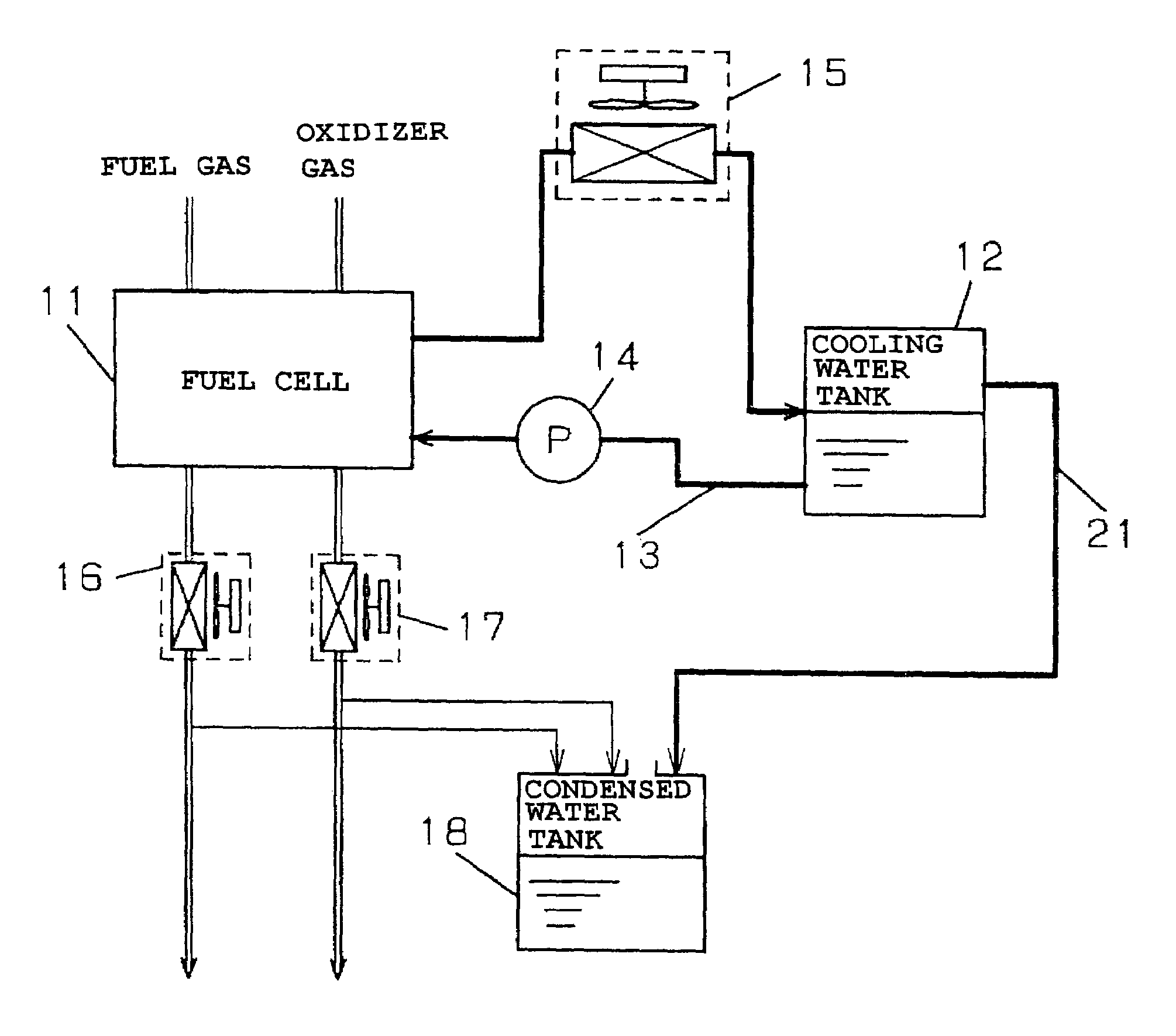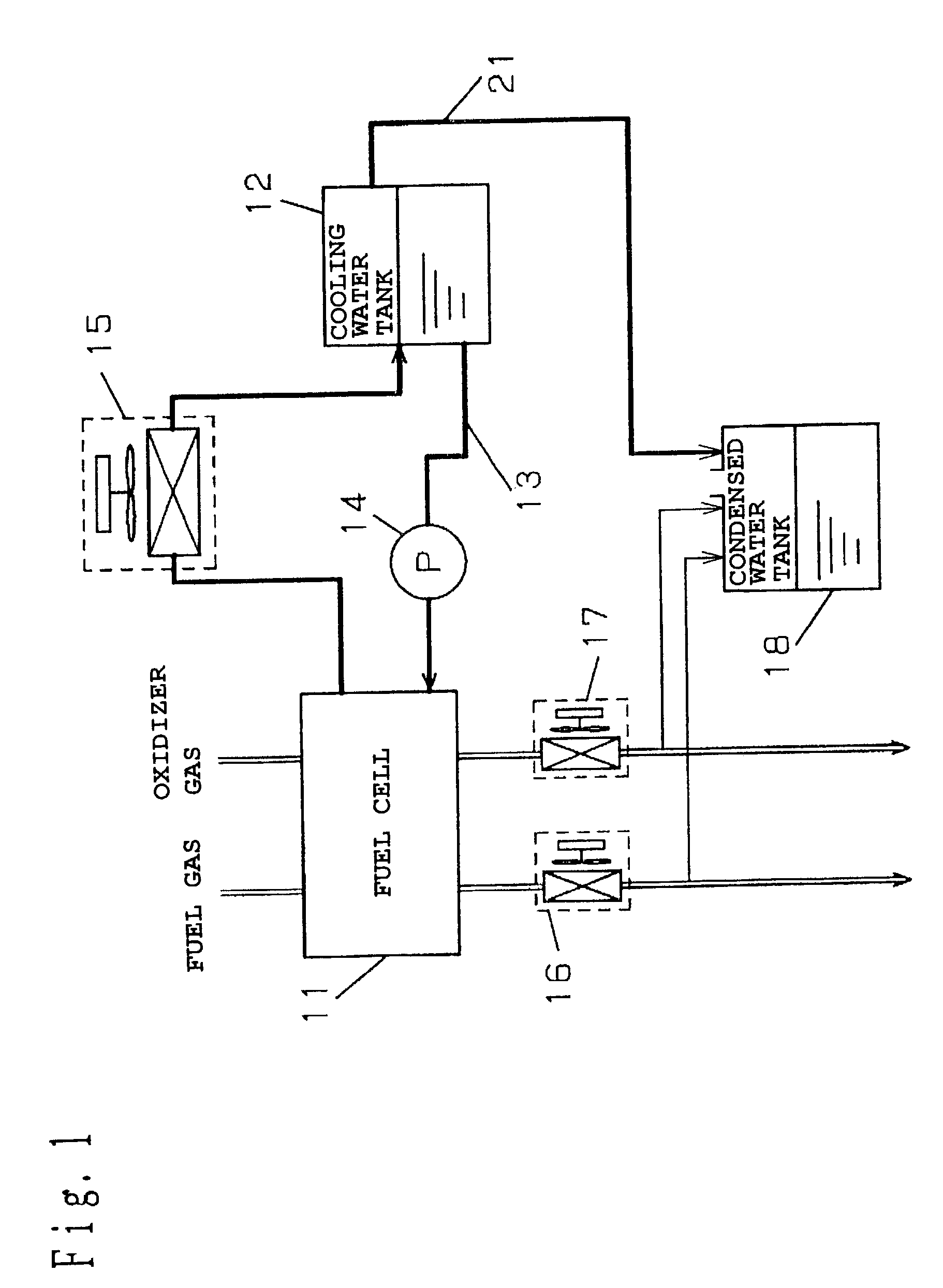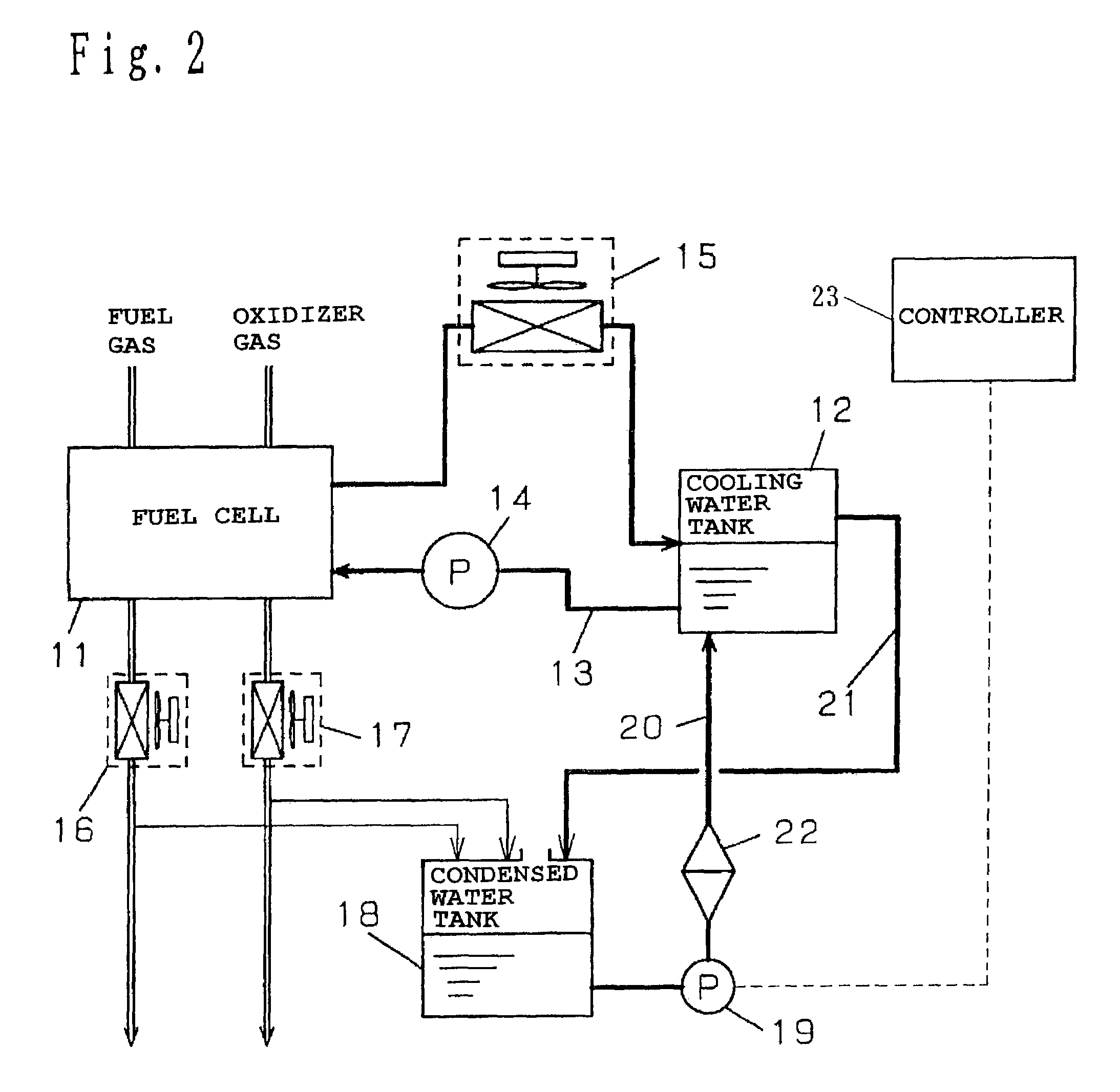Fuel cell system and operation method having a condensed water tank open to atmosphere
a fuel cell and condensed water technology, applied in fuel cell applications, sustainable buildings, electric power generation, etc., can solve the problems of difficult to completely prevent metal ions from being eluted into recycled water, reduced electric power generation amount, and poor purity of water, etc., to achieve high efficiency, low cost, and simple construction
- Summary
- Abstract
- Description
- Claims
- Application Information
AI Technical Summary
Benefits of technology
Problems solved by technology
Method used
Image
Examples
first embodiment
[0133](First Embodiment)
[0134]FIG. 1 is a block diagram showing a polymer electrolyte fuel cell system according to a first embodiment of this invention. The polymer electrolyte fuel cell system comprises a polymer electrolyte fuel cell 11 for generating electric power using a fuel gas and an oxidizing gas, a cooling water tank 12 for storing cooling water for cooling the fuel cell 11, a cooling water channel 13 for circulating the cooling water, a cooling water pump 14 serving as means of making the cooling water circulate through the cooling water channel 13, a heat exchanger 15 for cooling the cooling water, a fuel-side condenser 16 for cooling the exhaust fuel gas discharged from the fuel cell 11 to condense water vapor contained therein, an oxidizer-side condenser 17 for cooling the exhaust oxidizer gas discharged from the fuel cell 11 to condense water vapor contained therein, a condensed water tank 18 opened to the atmosphere for storing the water condensed in the fuel-side c...
second embodiment
[0146](Second Embodiment)
[0147]FIG. 2 is a block diagram showing a polymer electrolyte fuel cell system according to a second embodiment of this invention. Members identical to those in FIG. 1 and having the same functions as in FIG. 1 are given the same reference numerals, and description thereof will be omitted.
[0148]This embodiment is different from the first embodiment in that there are provided a water supply channel 20, which is provided with an ion removal filter 22 and a water supply pump 19 for feeding the condensed water from the condensed water tank 18 to the cooling water tank 12, and a controller 23 for controlling activation of the water supply pump 19. The ion removal filter 22 serves as means of treating water quality.
[0149]Now, the operation will be described. When the cooling water in the cooling water tank 12 is decreased, the water supply pump 19 in the water supply channel 20 is activated under the control of the controller 23, thereby supplying the water in the...
third embodiment
[0162](Third Embodiment)
[0163]FIG. 3 is a block diagram showing a polymer electrolyte fuel cell system according to a third embodiment of this invention. Members identical to those in FIG. 2 and having the same functions as in FIG. 2 are given the same reference numerals, and description thereof will be omitted.
[0164]In the polymer electrolyte fuel cell system according to this embodiment, the controller 23 comprises number-of-operations storage means 24 of counting and storing the number of operations of the system and number-of-operations resetting means 25 of resetting the number of operations to an initial condition.
[0165]The number-of-operations storage means 24 newly stores a value n+1, which is obtained by adding 1 to the number of operations n, after the system operation is terminated. Besides, the number-of-operations resetting means 25 changes the number of operations n in the number-of-operations storage means 24 to 0, the initial condition, after the operation of the wat...
PUM
 Login to View More
Login to View More Abstract
Description
Claims
Application Information
 Login to View More
Login to View More - R&D
- Intellectual Property
- Life Sciences
- Materials
- Tech Scout
- Unparalleled Data Quality
- Higher Quality Content
- 60% Fewer Hallucinations
Browse by: Latest US Patents, China's latest patents, Technical Efficacy Thesaurus, Application Domain, Technology Topic, Popular Technical Reports.
© 2025 PatSnap. All rights reserved.Legal|Privacy policy|Modern Slavery Act Transparency Statement|Sitemap|About US| Contact US: help@patsnap.com



